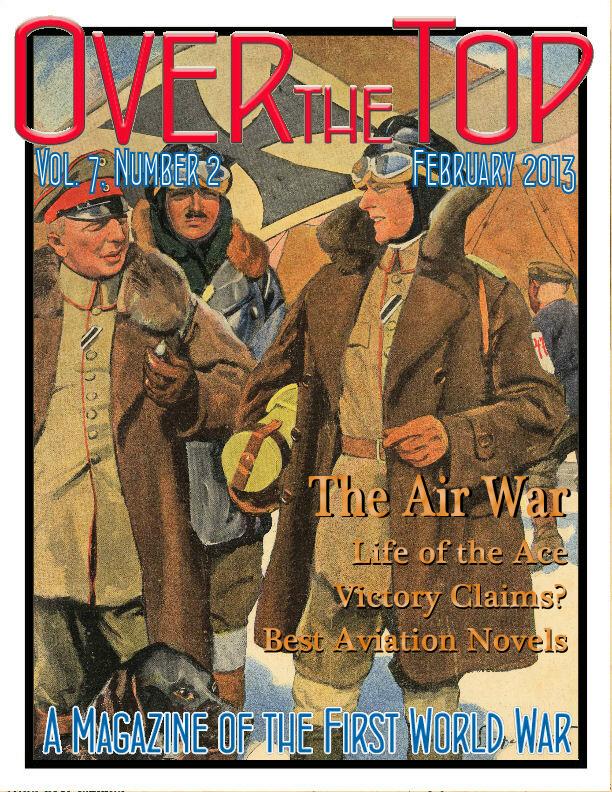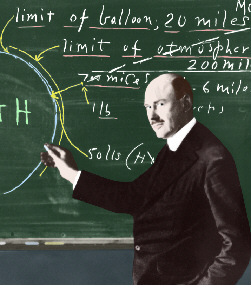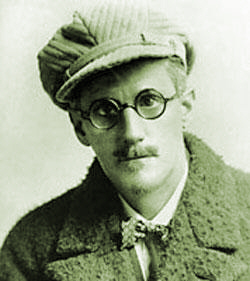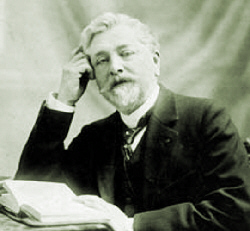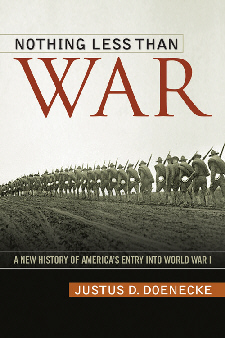


February 1913
First Armed Aeroplane Debuts
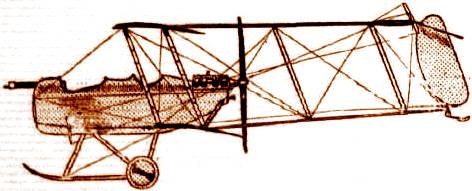
Sketch of the EFB-1
At the London air show of February 1913 the first-ever armed aeroplane, the EFB-1 two-seat biplane was unveiled by Vickers, Ltd. The designers seemed to fully understand the significance of their new aircraft. From the event program: "This design makes it possible for the biplane to be used as a machine for offence purposes. On the machine that will appear at the show, it will be seen that Messrs. Vickers have mounted a Maxim [machine] gun, which can be swiveled through an angle of 30 degrees. . .arranged in the cockpit at the centre of gravity of the machine, will be stored 1,500 rounds of ammunition."
|
|
|
TRENCH REPORT: I have received several inquiries about my future work with the World War One Historical Association, so I think it's time to share the developments with my regular readers. Yes, I will soon be wrapping up my contract to serve both as Editor in Chief of the Association's journal and as their Website Editor. The forthcoming Winter 2013 issue of The Journal will be my last and my work on the website will wrap up in a few months. I'm sorry, but I've not been apprised of their future plans, but, of course, I wish them well, since I'll be keeping my membership active. In any case, I will continue to publish my own magazine, Over the Top and the Trip-Wire (although the WW1HA will no longer appear on the masthead). Also, I will now finally have time to do my long-planned rewrite of my WWI mystery novel and, fingers crossed, get it published. MH
News from the World War One Historical Association
Click on Title or Icon to Access
|
How Can I Learn More About the Air War?
Visit the WW1HA primer on the Aircraft, Aces and Air Operations of the Great War. (link)
2013 Events
The WW1HA New York - New England Branch
2013 Annual Seminar
16 March at the Vassar College Alumnae House in Poughkeepsie, New York. Full Program Now Available: (link)
The 13th Annual General Meeting and Seminar of the WFA Pacific Coast Branch
Held once again in Victoria, B.C. at the Bay Street Armoury, 8-10 March 2013. The speakers list includes WW1HA stalwarts: Steve Suddaby, Len Shurtleff and Corey Reigel. Online Registration at: (link)
The League of World War I Aviation Historians Has Announced Their 2013 Seminar
Orlando, FL; 14-16 March. Details:
(pdf flyer)
Click on Image to Download Event Flyer
N. California Conference Features WW1HA Presenters
WW1HA representatives include: Terry Finnegan (author of Shooting the Front), and artilleryman George Young and naval expert Stephen McLaughlin. Entire schedule of speakers and topics:
(link)
|
|
French Cavalry, 1918
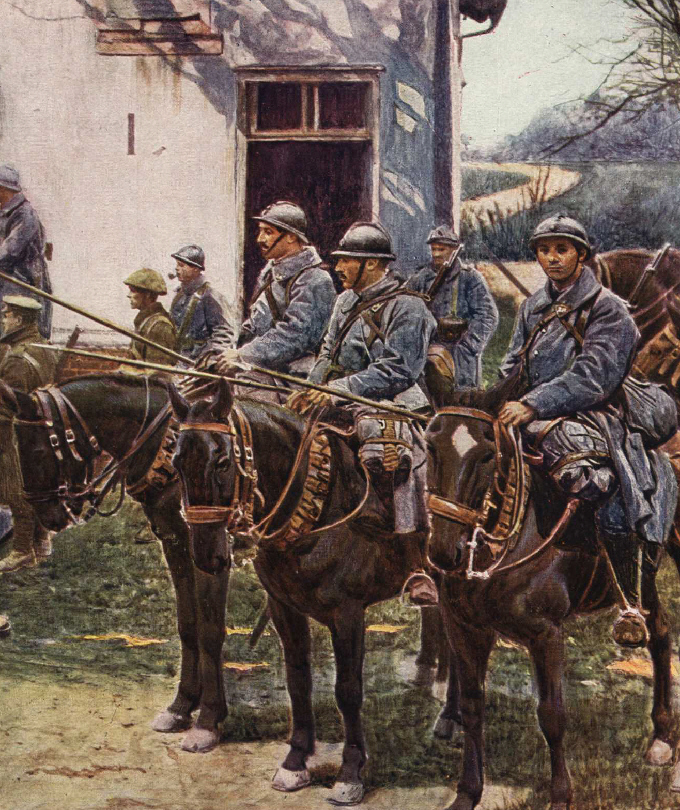
Awaiting the German Advance Through
the Somme, March 1918
This Month's Internet Feature
Video College of World War I
Thanks to emerging Internet video capability, you can now seriously study under authoritories on the Great War. There are presentations available from noted authors, institutions, and experts in almost every specialty. Here is as a sampler curriculum.
Overview: By John Keegan
Diplomatic Origins of the First World War
Battle Map: Verdun 1916
Battle in Depth: Cambrai 1917 (Five Part Series)
Hew Strachan: Importance of Naval Power in WWI
Hero: Lawrence of Arabia
Medicine: War Surgery, 1914-1918
War Art: Panthéon De La Guerre: From Paris to the Chicago World's Fair to Kansas City

The first aerial victory of the Great War occurred on 5 October 1914 when a Voisin-3 of the French Air Service, flown by Sgt. Joseph Frantz and observer Pvt. Louis Quénault downed an Aviatik-B at Jonchery-sur-Vesle at 1005 hrs. The German crew was Sgt. Wilhelm Schlichting and Obltn. Fritz von Zangen of Fl. Abt. 18.

Sometimes "incidents" occur in politics when the nature of a certain order of things is revealed, as it were, suddenly, and with extraordinary power and clarity in connection with some relatively minor happening. . .
.
V. I. Lenin, 29 Nov 1913, Pravda
|
|
Page Two
|
|
|

Albert I, King (and War Hero) of the Belgians
Albert I succeeded to the Belgian throne in 1909 and ruled until his accidental death in 1934. He was the third king of the Belgians to reign since the independence of the country in 1830. Like many of the ruling family, he was a devout Catholic, but he was also a social progressive pushing for universal suffrage and for linguistic equality between the two linguistic groups making up the country.
His reign is mostly associated with the Great War, during which virtually the whole of Belgium was occupied by the Germans. Constitutionally at the head of the armed forces during time of war, he led the country through these difficult times while gaining an international reputation for heroism and integrity. He was idealized in the written and illustrated Entente and Allied media during the war, while at the same time being mistrusted by war leaders and politicians. Both Britain and France feared that Albert I might make a separate peace with the Germans. That is why his government and military were never informed about or participated in any of the great Allied offensives until at the very last months of the war. The Belgian overall strategy was to wait out events and hope for the best.
This was borne out by events, and Albert I returned to a liberated Belgium, welcomed as a returning hero, ever steadfast in his resolve. After the Great War his stature and personal integrity was unquestioned. An avid mountaineer and rock climber, he died during an accident while climbing in 1934.
In the postwar years, towns and cities in many countries vied to erect public monuments commemorating the war. Even Paris has an equestrian monument of King Albert. This particular monument is one of many in Antwerp that were built during this period. The second photo shows details of the side groupings of Belgian soldiers and mourning families. Dedicated in 1930 in the presence of the king and queen themselves, it was of a grand design in the realistic school, one of the more ornamental and imposing monuments to the Great War in Belgium.
The official title is "Monument for the Dead." It was designed and sculpted by Belgian artist Edward Deckers.
TL
|
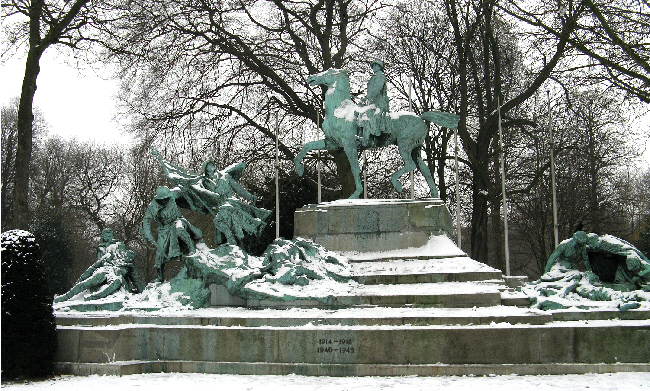
|
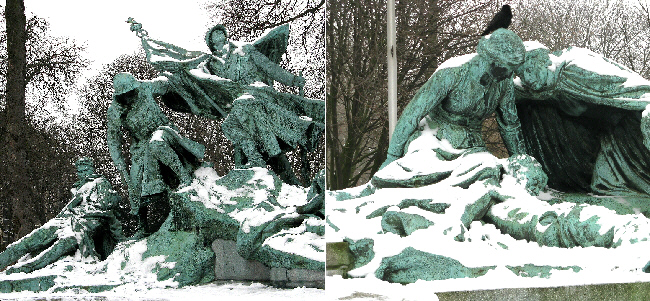
Click here to read a contemporary account about King Albert and his wartime leadership
|
|
|
Verdun Twenty Years Later:
A Doomed Reconciliation
It must have promised to be a wonderful, idealistic, hopeful, pacifistic dream come true. French and German veterans aspiring to a reconciliation between their nations collaborated on a joint 20th-anniversary commemoration of the Battle of Verdun with a dramatic honoring of their fallen comrades. It was held on 12 July 1936 at the new, massive Ossuary, the odd mixture of fortress and cathedral architecture containing the skeletal remains of 130,000 unidentified French and German fatalities, and the adjacent French National Cemetery. Both are located on one of the "hottest" spots of the Verdun battlefield.

Verdun Ossuary and National Cemetery
The Veillée de Verdun, as it was known was initiated by well-meaning former Poilus who were hoping to defuse the heightening international hostilities of the day. They did not appreciate, however, that they would actually be dealing with the Nazi government, who controlled the German participation from behind a curtain of sincere veterans. The German authorities fully intended to distract public attention from their own rearming effort and the Füher's hostile intentions. Despite the Nazi flags borne by the 500-man German delegation and their Heil-Hitler saluting, the French participants and observers were utterly duped. Franco-German relations seemed to have advanced, steps had taken back from some bottomless precipice. Four years later, though, Verdun and Paris were both occupied by the German Army. France was utterly defeated.
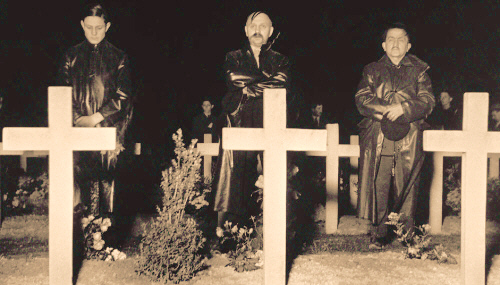
French Veterans at the Night Time Event in the Cemetery
In the run-up to the Second World War the 5.5 million-man French veteran community and its official organization, the Anciens Combattants, were powerful voices in politics. Their advocacy for international peace, strengthened by the apparent success of the Veillée de Verdun, negated in good part French "alarmists" attempting to prepare the nation for the coming onslaught. Even after France surrendered in 1940, the Anciens Combattants were the strongest supporters of Verdun hero Henri Petain's collaborationist goverment. Apparently, the price of the victory at Verdun included an epidemic of self-deception for a generation of France's warriors.
|
|
The Indian Army at Gallipoli
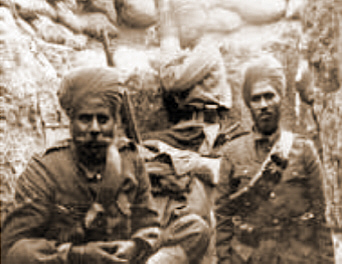
Sikh Soldiers in a Trench at Gallipoli
The contribution of the Indian Army at Gallipoli is a neglected subject. The Indian expeditionary force that served in the Dardanelles was not very large in numbers, barely 5000 men in a campaign that swelled from 75,000, to nearly half a million Allied troops engaged by the end of the campaign.
The Indian Army was represented at Gallipoli by the 7th Indian Mountain Artillery Brigade, the Indian mule corps, a medical establishment, and the 29th Indian Infantry Brigade. The men deployed were mostly from mountain areas, with Sikh and Gurkha units heavily represented. The infantry served in the Helles area from 1 May till 10 July, being transferred to Anzac after a brief period of rest and reorganization at Imbros, just in time to take part in the August offensive. The artillery landed with the Anzacs and shared all the travails and vicissitudes of that corps.
Particularly notable during the Gallipoli campaign were the contributions of the 14th Sikhs in the Third Battle of Krithia in the Helles Sector, and the 1-6th Gurkhas in the climactic Battle of Sari Bair above Anzac.
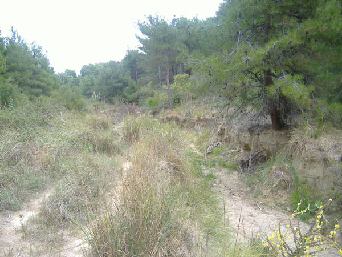
Gully Ravine, Battlefield of the 14th Sikhs
During the Third Battle of Krithia on 4 June, the 14th Sikhs, composed
entirely of seasoned Jat Sikh soldiers from the Punjab, launched repeated attacks, in the
face of murderous machine gun fire, against the Turkish positions astride Gully Ravine.
Held up by the barbed wire that was unaffected by the Allied artillery bombardment, a
section of men leapt the barbed wire as if it were a hurdle on a sports field and charged
the Turks with the bayonet. However, human valor was unavailing against modern
weapons of war, and on that day the battalion's casualties amounted to 82 percent of the
men actually engaged in the battle. The repulse of the Turkish attacks on 5 July marked the end of serious fighting for the Indian brigade in the Helles area, and after a few days spent in bivouac on the coast it was moved to the island of Imbros for rest and reorganization.
The approximately 4800-strong Indian detachment was to serve at the northern
flank of Anzac after the 29th Indian Brigade landed at Anzac cove on 5/6 of
August. They would take part in what would be the last major attempt to break the stalemate by a bold and, in retrospect, overambitious plan. This called for a vigorous offensive from Anzac combined with a surprise landing at Suvla Bay under cover of a diversionary attack in the Helles area to pin down the Turkish forces and prevent reinforcements being sent to the north.
In advance of the main attack on 9 August intended to capture the summit of Sari Bair Ridge, the 6th Gurkhas and small detachments from the 6th South Lancashires and 9th Warwickshires charged up the slope as dawn broke over Asia. Their skirmishers reached the crest, but as
the Gurkhas advanced on the enemy as it was retreating down the opposite slope, they were suddenly hit by a salvo of artillery shells and a Turkish counterattack.
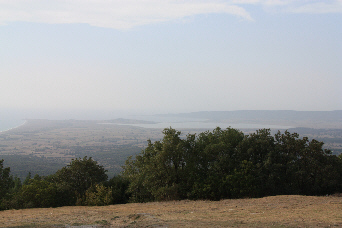
View from Sari Bair, Suvla Bay in Distance
Elements of the 6th Gurkhas Reached Here, 9 August 1915
Driven from the summit, the Gurkhas rallied at their line of the previous night and held off the Turkish assault. The subsequent main attack, which was delayed four hours, failed. The battle for Sari Bair, and the Dardanelles land campaign, were now lost. Other fighting followed for the Indian troops, but eventually, they left in the general evacuation which was completed by December at Anzac.
From the United Service Institution of India Centre
for Armed Forces
|
My World War I Expeditions for Valor Tours, Ltd.

Click on Image to Send Email
|
Page Three
|
|
What Did Houdini Do During the Great War?
|
Another installment of our new feature, "What Did Houdini Do During the Great War?" that focuses on unknown or unlikely participants in the war. (We need a continuous flow of suggested names from the readers to continue this feature.)
Robert H. Goddard (1882-1945)
Rocket Scientist
The greatest homegrown rocketry expert America ever produced, Robert Goddard had already patented the multi-stage rocket by 1914. When his country entered the Great War his services were referred to the Army Signal Corps by the Smithsonian Institution. By November 1918 he had developed a battlefield artillery rocket and a smaller man-carried missile, which in a later war would be the inspiration for the bazooka. But the war ended before the weapons could be put to use. Goodard returned to his laboratory at Clark University in Massachusetts and developed the liquid-fueled rocket in 1926 and pursued high altitude flight, guidance systems and the basics of space travel throughout his career. Today, NASA's Space Flight Center in Maryland bears his name. Goddard left us this most inspiring thought: "It is difficult to say what is impossible, for the dream of yesterday is the hope of today and the reality of tomorrow."
James Joyce (1882-1941)
Author
Having left his native Dublin in 1904, Joyce settled in picturesque Trieste on the periphery of the Austro-Hungarian Empire for a decade. He published his masterful short story collection Dubliners on the eve of war. When Italy joined the hostilities in 1915, however, Trieste was threatened with invasion, and the author abhorred the thought of any exposure to war. He fled to Zürich for the duration, where he was highly productive—completing A Portrait of An Artist as a Young Man in 1916 and the early parts of Ulysses (published in 1922). In his free time in Zürich he managed to meet Lenin and observe the birth of Dada, the First World War's contribution to art.
Gustave Eiffel (1832-1923)
Engineer
Arguably the most famous engineer of all time, Gustave Eiffel became fascinated with aerodynamics during his career, especially in building his famous tower. Around the turn of the century he started applying his boundless curiosity to flight. In his early studies of airfoils he discovered that single wings (monoplanes) would be more efficient than dual-wings (biplanes). To pursue his research he established a laboratory with an innovative wind tunnel at the base of the Eiffel Tower that was later banished to the suburbs because of the noise it produced. When war broke out he placed his facility at the service of his nation. Eiffel and his staff continued research on airfoils, propellers and projectiles, (shells and bombs). Several sources mention a monoplane aircraft he and his staff designed in 1917 but do not give any details or show a photo or drawing of it. Please contact the editors if you know of any sources with details on Eiffel's monoplane.
|
World War I Headlines
in the 21st Century
|
|
We Love Those Rat Catchers
Longtime readers of the Trip-Wire know of our admiration for those great sportsmen of the trenches, the rat catchers. Here is a team of German competitors proudly displaying their trophies. Note how several members are proudly brandishing their improvised hunting apparatuses. Well done chaps!
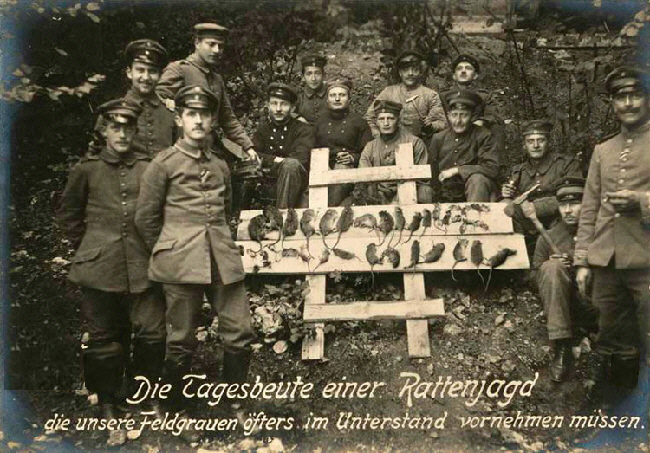
|
|
|
 |
Nothing Less Than War:
A New History of America's Entry into World War I
By Justus D. Doenecke
Reviewed by Sal Compagno
|
As the centennial of the Great War, or World War I, is rapidly approaching, significant interest in the conflict will most certainly be forthcoming. One of the most intriguing and complex issues is why America chose to enter the conflict in April of 1917, two-and-a-half years after the start. America's involvement both politically and militarily has been debated from the beginning and continues to this day. In this book, Justus D. Doenecke, professor of history in New College, Florida, provides an in-depth analysis of why the USA made the leap into the cauldron. Using sources such as newspaper articles, private letters, official correspondence, Congressional records and personal diaries, he delivers a vivid scenario of the choice for war.
Choosing as the title of his book a quote from President Wilson's famous speech to Congress in his request for a declaration of war on Germany, Doenecke shows how America's entry was
a deliberate but controversial choice. He lays out the month by month interaction of the
belligerent parties and how they related to America, and describes the socioeconomic fabric of America at the time. With particular focus on the thoughts and decisions of Wilson, the author presents
a comprehensive view of the president's choices.
Familiar characters such as Bryan, House, and
Lansing play a dynamic role in those months leading up to our entry into the war, and Doenecke brilliantly explains the divisions in the nation from the pro-Allied East Coast to the dogged isolationism of the Mid-West and Far West.
Germany's impatience in declaring unrestricted submarine warfare in February and the infamous Zimmerman note finally forced Wilson's hand, but war was not universally accepted by all the people of America, and the author demonstrates their lack of enthusiasm in detail.
The author concludes with a severe criticism of Wilson for not taking opportunities to maintain
American neutrality, although Doenecke also recognizes the Central Powers' clumsy and disastrous foreign policy as contributing to American entry into the War. The book is highly recommended for those who wish to grasp the background of America at that time while revisiting events the led up to our participation in World War One.
Nothing Less Than War: A New History of America's Entry into World War I. Justus D. Doenecke. The University Press of Kentucky, 2011, ISBN: 978-0813130026.
|
|
| |
|







